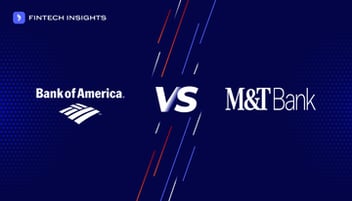For quite a while investing was considered a niche activity, exclusive to high street investors, the wealthy and the extremely wealthy. Then the digitalization of almost every process came, and suddenly investing is no longer restricted to niche populations.
Many friends and even their parents have come and said to me how I can get into the action.
“I see people do it and it seems easier than I thought it was.”
To say that I was surprised that my friend’s mother, a 60-year old man was asking me how he could use his phone to invest, would be an understatement. However, I should not have been surprised by his question.
The continuous rise of interest in Cryptocurrencies and the recent Gamestop saga are clear indicators that more and more people are interested in investing. And people do not want to have to dabble through different applications to tap into their investments. Why should they, when banks around the world are beginning to incorporate such wealth management features into their digital banking applications?
Here are a few reasons why banks and fintechs should consider including such features into their digital banking.
Accessibility
Easy access has always been paramount for customers. People who want to trade, and have an overview and control of their assets, like their finances will always prefer to do that in a single contained environment. By contained environment we mean a single app. The single app approach has been steadily growing over as an essential customer need. The prime example of China’s Wechat comes to prove that. Wechat is the mobile application where users can do almost everything from handling their financials, chatting with their friends to ordering food, shopping online and even booking their holidays. Through the integration of more and more capabilities like this, Wechat enables users to manage almost all aspects of their online activity through a single application.
Banks can use the growing popularity of such applications to reform and organize their future strategy. Incorporating features such as being able to buy, sell, manage stock shares and cryptocurrencies through your connected bank accounts will simplify the process that many people consider too complicated to attempt. Many banks such as SoFi, Revolut and Stash have already introduced such features, and soon they will not be considered pioneers in that but the norm.
With continuous digitization and amplified connectivity through social media customer interest will only rise. This trend towards the democratization of investment can only benefit banks and fintechs. Especially, since becoming trustworthy sources and platforms for users to conduct all their financial business, will mean continued and growing customer loyalty. Customers tend to reward companies that make it easy and simple for them to conduct all of their daily needs under one roof.
Convenience
The overflowing amount of information bombarding users everyday and the multitude of applications needed to conduct their business, chores and communication, has solidified convenience as a real customer necessity. As most digital applications are becoming easier for customers to use, they are increasingly demanding the same for their digital banking and investment needs. They want for their digital banking offerings to be inclusive and easy to navigate. As Alex Kreger explains in his article at The Financial Brand.
“Consumers now compare their digital experiences with big tech products with those they have with banking products. Often there is quite a gap between the usability of, say, Instagram and their banking app.”
Users, then, expect their digital banking and investing to be as smooth and easy-to-navigate a process as scrolling through their social media accounts. Customers would rather log into their banking application, tend to their finances and simply tap at another tab in the same application to manage their investments – which at the same will be directly connected with their bank accounts under the safety of their trusted bank – than switching between their banking and investment apps.
The perks for banks that incorporate such features are evident. A convenient and inclusive banking application, even if not yet completely optimized and with the best UX-design will at any time beat the use of multiple applications for different features.
Transparency
Customers always need to know that they are in absolute control of their assets, whether it is their funds, stock shares, cryptocurrency or even commodities. They need to know how and where their money is invested and be able to adjust their strategy of investment whenever they please.
Investors and clients crave for easy-to-use digital investment offerings that will offer them a full-view of their investments with complete control at their hands. Customers go through a lot of research before choosing their primary bank. Besides strictly financial information (pricing) that will serve their banking needs better, they factor in the level of trust and transparency of banks towards their clients.
So, when they have chosen a bank, this also relates to a level of safety they feel using that bank for their everyday digital banking. This can be easily translated to trust that they are using a safe platform of their investments if both are delivered through the same provider. Customer trust towards their bank will be rippled through to their investing as well. Banks and financial firms need to understand that customers need a transparent and easy tool to conduct their investing. They need to expand beyond their assets and liabilities mentality and focus on long-term customer care.
And there’s another benefit to that. Bringing in such features can help regulate and moderate investments better. The case of Bitcoin proves that point. Its volatility and inability to properly regulate that poses risks for customers has been a troubled issue over the years. Incorporating Bitcoin exchanges, for example, exchanges into banking applications can be a crucial step forward for its regulation. While the problem is that many Crypto exchanges have escaped regulators by many means, banks are more likely to be penalized and sanctioned for improper risk management.
Another example of transparency needed in investments was the recent Robinhood event. Robinhood disabled the buying and selling of Gamestop shares to protect clients, who could end out without proper collateral for their requested trades. That went completely against the broker’s pledge to bring the democratization of investments trading with disgruntled investors feeling betrayed as they were not able to invest freely taking advantage of this volatility. They even went as far creating a fund to purchase an ad in Super Bowl that would defame them worldwide. It clearly shows that customers demand that transparency.
Including such features in banks besides offering that transparency needed in cryptocurrency exchange while providing a safe place for customers to conduct such exchanges. It can offer the transparency they want through offerings that allow them to control their investments easily on a daily basis, through their trust partner: their primary bank.
Millennials
Digital wealth management functionalities are no longer optional. As Millennials slowly represent a larger percentage of the adult population, catering to their needs comes to be the focus of digital companies worldwide. A PWC research shows that this prevalent age group has come to expect online and digital functionalities in all aspects of their lives. This of course does not exclude their investment needs. Technology has already provided for them the ability to digitally manage their finances and their investments with myriads of applications and fintechs offering these but through a separate application.
With the increased expectations for personalization, customization and the willingness of Millennials to offer the information to achieve these, it stands as a solid reason for banks to try to include such features into their offerings list.
Heavily inclined towards self-service or a light touch investment management solutions, the millennial investors responded that they are 66% more in favor of a self-directed investment portal. This presents banks and fintechs with a unique opportunity to incorporate such technology into their digital banking platforms. Doing so banks and fintechs will not only be digging and serving a large proportion of the population, but in reality be creating life-long relations with people that will be their main future clientele.
Accessibility, convenience, transparency and tapping into the millennial digital needs are few of the reasons that banks should consider offering investment features through their digital banking applications. The effectiveness of such strategy is there in the millions of users who take advantage of all-in-one applications or those that utilize wealth features already introduced by several banks worldwide. As user experience is constantly moving towards an all-included approach it seems like it would be a misstep for banks to consider wealth management features as another passing trend. To not start thinking of their digital banking as an all-financial-experiences platform will undoubtedly lead them to a future where they become obsolete.
If you are interested in learning how some banks are already offering such features, how they do it and how well, take a look at how  can give you all that.
can give you all that.





